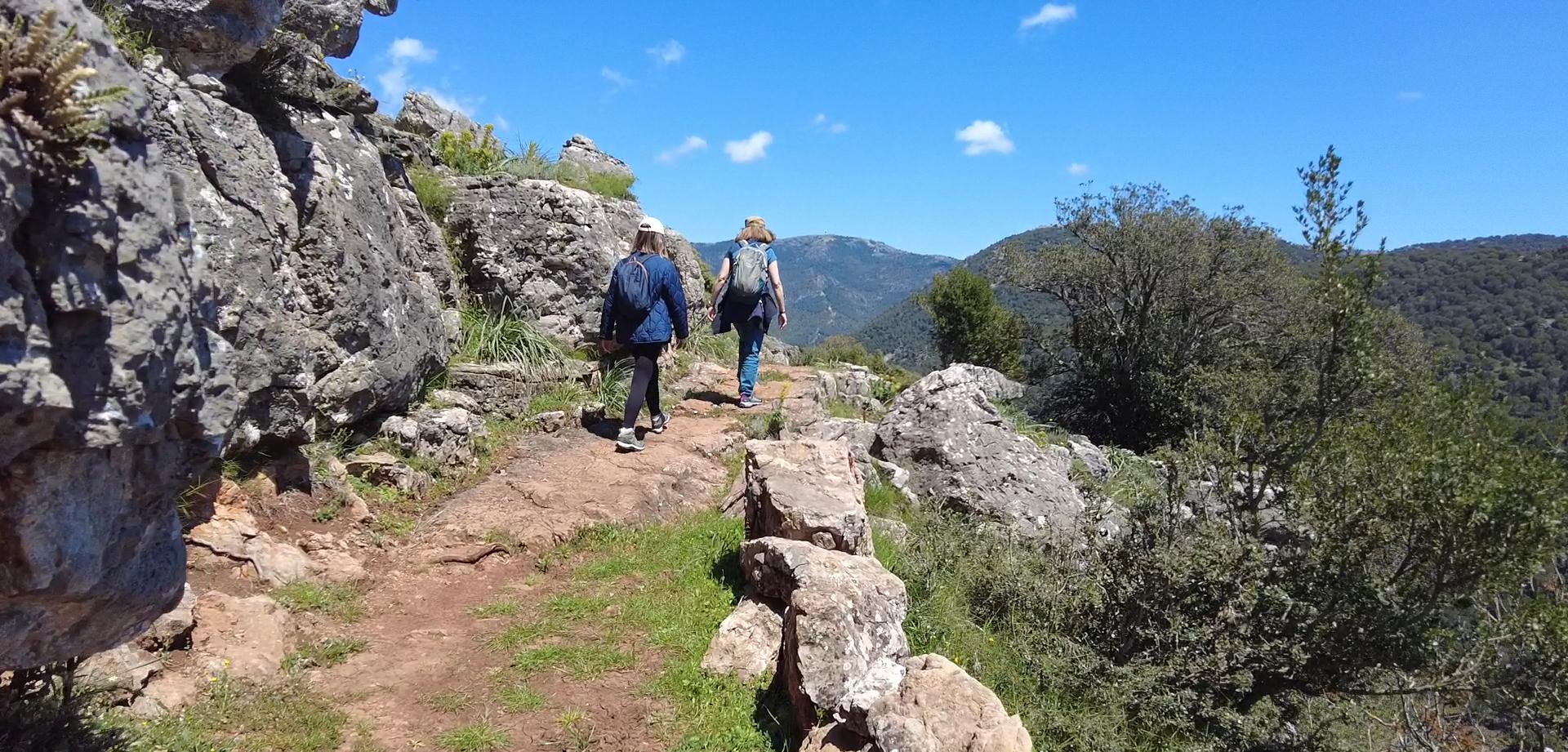The route was created as part of a collaboration between the GAL Ogliastra and the FoReSTAS Agency, with the aim of offering hikers an immersive experience in the natural and scenic beauty of the Ogliastra area. The itinerary features points of interest along every section. You can choose your starting stage and build your own customized route, traveling from north to south or from south to north. The direction of travel may change, but the quality of the landscape remains unchanged.
The path
The path offers moments of quiet alternate with opportunities for active discovery, among limestone cliffs, climbing routes, and via ferratas.
The route passes through places full of charm such as the Scala di San Giorgio (16), the abandoned village of Osini Vecchio (17), stone sheepfolds immersed in greenery, and important archaeological sites like Serbissi (30). The landscapes continually change: from olive groves and agricultural inland areas to dolomitic formations and holm oak forests, up to limestone plateaus from which the majestic Perda Liana (37) can be glimpsed. The journey crosses shady and lush environments such as the Montarbu Forest (35), leading to the clear waters of the Niala Pools (Ussassai). It is a path that invites slowness, a sensory immersion into the most authentic Sardinia, among unspoiled nature, ancient memories, and silences that tell stories. The final stage of the journey, long and demanding, represents the most intense synthesis of the entire route. It winds through the Montarbu Forest (35), climbs to Punta Margiani Pubusa (36) with its spectacular panoramas, and skirts closely to the majestic Perda Liana. Among panoramic peaks like Cuccuru ‘e Muvroni (38) and Erdorrù (39), and stretches overlooking the Alto Flumendosa Lake, the trail alternates descents and steep climbs until reaching the vicinity of the SIC Rio Sicaderba, where a restored old railway station marks the end of the path.
From Sant'Antonio Jerzu to Gairo Taquisara
This stage lends itself to being experienced in different ways, depending on the time available and personal interests: you can head straight for the goal or tackle it calmly, with the spirit of those who wish to be guided by curiosity, discovering — step by step —the small villages scattered along the route, through encounters, stories, and surprising landscapes.
From the very beginning, it is possible to deviate toward Jerzu, renowned for its winemaking tradition. Here, numerous wineries open their doors for tastings that, with every sip, convey the passion and dedication of local winemakers—the true guardians of this land.
Another unmissable stop is Ulassai, where art and nature coexist in perfect harmony. The village is deeply connected to the figure of Maria Lai, whose works — spread across museums and open-air spaces — turn the town into a widespread museum. For adventure lovers, Ulassai also offers thrilling experiences such as climbing and the spectacular via ferrata, now iconic features of the area.
Continuing along the trail, a detour leads to Osini, where nature reveals one of its masterpieces: the Scala di San Giorgio (the stair of Saint George) (16), an impressive cleft in the rock with a primordial charm. Not far away is the abandoned village of Osini Vecchio (Old Osini), filled with atmosphere and memory.
The entire route is an immersion in the Tacchi of Ogliastra (Ogliastra’s limestone hills), among limestone cliffs and holm oak forests, with a passage through the archaeological site of Serbissi —a remarkable testament to the Nuragic civilization and an open window onto a thousand-year-old past.
The stage concludes in Gairo Taquisara, a small village where tranquility and authenticity reign.
Tips
The R.E.S. signage is well distributed and easily readable along the entire route.
If you choose to include the detours to Jerzu and Osini, it is advisable to reorganize the stage, considering the possibility of dividing it into multiple days.
This allows for a more complete and relaxed enjoyment of the points of interest.
It is also worth noting that the next stage, from Gairo Taquisara to Niala (Ussassai), features an easy-to-follow path, while the subsequent stage from Niala to Villagrande Station is significantly more challenging and requires proper physical preparation and careful logistical planning.

